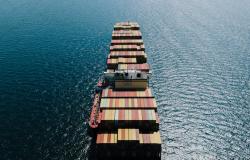
Global trade is undergoing a structural reconfiguration, marked by a steady shift from hyper-globalization toward regionalization. Intra-regional trade has risen significantly within blocs such as the EU, USMCA, RCEP, and ASEAN, even as trade with large economies such as China has grown. Firms and policymakers alike are prioritizing economic security and supply chain resilience over cost optimization, leading to the expansion of regional trade corridors and deep trade agreements. This transformation is not episodic but systemic, shaped by multiple inflection points, from the rise of mega deep regional trade agreements to the 2008 Global Financial Crisis to the COVID-19 pandemic and recent geopolitical conflicts. While regionalization enhances resilience, it also limits competition and risks entrenching fragmentation and economic exclusion. To harness its benefits without undermining global integration, large economies must take the lead in sustaining multilateral cooperation, aligning regional strategies with global rules, and promoting shared prosperity. This paper explores the drivers, empirical patterns, and policy pathways of regionalization as the defining trade dynamic of the 21st century.
Photo by Kelly